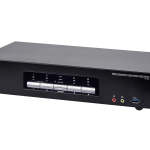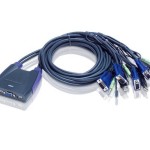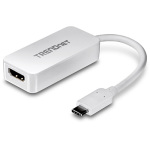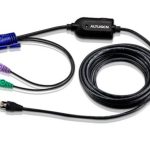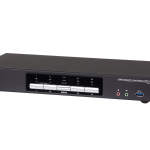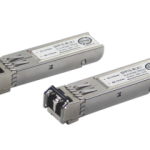
Feature :
Features and Benefits
- MOXA ART ARM9 32-bit 192 MHz processor running Linux 2.6
- 32 RAM, and 16 MB flash disk on board
- 802.11b/g/n WLAN with repeater function
- WEP, WPA, and WPA2 encryption
- 10/100 Mbps Ethernet for network redundancy
- SD socket for storage expansion
- DIN-rail or wall-mount installation
- Designed to withstand 5 g’s of continuous vibration and 50-g shocks
- Robust, fan-less design
Overview
The W321 is an embedded Linux computer that features 2 software selectable RS-232/422/485 ports, and support the IEEE 802.1b/g/n standards for WLAN connections. In addition, the computer has 1Ethernet port, and comes with an SD socket for storage expansion.The W321’s Linux OS runs on the MOXA ART 32-bit ARM9 processor,and provides a powerful and reliable platform for harsh, industrial environments. You will find these computers ideal for a variety of machine-to-machine applications, including data acquisition, protocol conversion, and remote device control and monitoring.
Specification :
| • Hardware Specifications | |
| • Computer | |
| CPU | MOXA ART ARM9 32-bit 192 MHz |
| OS (pre-installed) | Embedded Linux with MMU support |
| DRAM | 32 MB |
| Flash | 16 MB |
| Digital Input/Output | Input Channel: 4, sink type Input Voltage: -0.5 to 3.3 VDC Digital Input Levels: • Logic level 0: + 0.8 V max. • Logic level 1: + 2 V min. Connector Type: 2 x 5 pin header Output Channel: 4, source type Output Current: 50 mA Digital Output Levels: • Logic level 0: + 0 V • Logic level 1: +3.3 V Connector Type: 2 x 5 pin header |
| • Storage | |
| Storage Expansion | SD slot |
| • Ethernet Interface | |
| LAN | 1 auto-sensing 10/100 Mbps port (RJ45) |
| • WLAN Interface | |
| Standard Compliance | 802.11b/g/n |
| Radio Frequency Type | DSSS, CCK, OFDM |
| Media Access Protocol | CSMA/CA (Carrier Sense Multiple Access with Collision Avoidance) |
| Broadcast Frequency | 802.11 b/g/n ISM Band: 2.412~2.4835GHz |
| Modulation | • 802.11b: DSSS (DBPSK, DQPSK, CCK) • 802.11g: OFDM (BPSK,QPSK,16-QAM,64-QAM) • 802.11n: OFDM (BPSK,QPSK,16-QAM,64-QAM) |
| Transmission Rate | • 802.11b: 11Mbps • 802.11g: 54Mbps • 802.11n HT20: 6.5Mbps to 65Mbps, • 802.11n HT40: 13.5Mbps to 135Mbps |
| Output Power (1TX) | • 802.11b: 17dBm ± 2dBm@11Mbps • 802.11g: 14dBm ± 2dBm@54Mbps • 802.11n HT20: 14dBm ± 2dBm@MCS7 • 802.11n HT40: 13dBm ± 2dBm@MCS7 |
| Rx Sensitivity (typical) | • 802.11b: -88dBm ± 2dBm@11Mbps • 802.11g: -71Bm ± 2dBm@54Mbps • 802.11n HT20: -69dBm ± 2dBm@MCS7 • 802.11n HT40: -66dBm ± 2dBm@MCS7 |
| Antenna Connector | Reverse SMA |
| Antenna | External 2 dbi dipole antenna |
| Wireless Security | WEP: 64-bit/128-bit, WPA, WPA2 data encryption |
| WLAN Modes | Ad-hoc (802.11b/g/n), Infrastructure |
| • Serial Interface | |
| Serial Standards | 2 or 4 RS-232/422/485 ports, software-selectable (DB9 male) |
| Console Port | RS-232 interface (TxD, RxD, GND), with 4-pin pin header output |
| • Serial Communication Parameters | |
| Data Bits | 5, 6, 7, 8 |
| Stop Bits | 1, 1.5, 2 |
| Parity | None, Even, Odd, Space, Mark |
| Flow Control | RTS/CTS, XON/XOFF, ADDC® (automatic data direction control) for RS-485 |
| Baudrate | 50 bps to 921.6 kbps (non-standard baudrates supported; see user’s manual for details) |
| • Serial Signals | |
| RS-232 | TxD, RxD, DTR, DSR, RTS, CTS, DCD, GND |
| RS-422 | TxD+, TxD-, RxD+, RxD-, GND |
| RS-485-4w | TxD+, TxD-, RxD+, RxD-, GND |
| RS-485-2w | Data+, Data-, GND |
| • LEDs | |
| System | Ready, SD |
| LAN | 10M/Link, 100M/Link (on connector) |
| WLAN | Enable, Signal Strength |
| Serial | TxD, RxD |
| • Switches and Buttons | |
| Reset Button | Supports “Reset to Factory Default” |
| • Physical Characteristics | |
| Housing | Aluminum (1 mm) |
| Weight | 185 g |
| Dimensions | (without ears or antenna) 77 x 111 x 26 mm (3.03 x 4.37 x 1.02 in) |
| Mounting | DIN rail (requires optional DK-35A DIN rail kit), wall |
| • Environmental Limits | |
| Operating Temperature | -10 to 60°C (14 to 140°F) |
| Storage Temperature | -20 to 80°C (-4 to 176°F) |
| Ambient Relative Humidity | 5 to 95% (non-condensing) |
| Anti-vibration | 5 g’s @ IEC-68-2-6, sine wave, 5-500 Hz, 1 Oct./min, 1 hr/axis (without any USB devices attached) |
| Anti-shock | 50 g’s @ IEC-68-2-6, half-sine wave, 30 ms |
| • Power Requirements | |
| Input Voltage | 12 to 48 VDC |
| Power Consumption | 5.2 W • 216 mA @ 24 VDC • 433 mA @ 12 VDC With full load on USB ports: 11 W • 458 mA @ 24 VDC • 916 mA @ 12 VDC |
| • Standards and Certifications | |
| Safety | UL 60950-1, EN 60950-1 |
| EMC | EN 55022 Class A, EN 61000-3-2, EN 61000-3-3, EN 55024 |
| Radio | EN 301 489-1/17, EN 301 893, EN 300 328, EN 50392, FCC Part 15, Subpart C/E |
| Green Product | RoHS, CRoHS, WEEE |
| • Reliability | |
| Alert Tools | Built-in buzzer and RTC (real-time clock) with battery backup |
| Automatic Reboot Trigger | Built-in WDT (watchdog timer) supporting 1-255 level time interval system reset, software programmable |
| MTBF (mean time between failures) | 367,253 hrs |
| • Warranty | |
| Warranty Period | 5 years |
| Details | See www.moxa.com/warranty |
| Software Specifications | |
| • Linux | |
| OS | Linux 2.6.38 |
| File System | JFFS2 (for on-board flash) |
| Internet Protocol Suite | TCP, UDP, IPv4, SNMPv1, ICMP, ARP, HTTP, CHAP, PAP, SSH 1.0/2.0, SSL, DHCP, NTP, NFS, Telnet, FTP, TFTP, PPP, PPPoE |
| Internet Security | OpenVPN, iptables firewall |
| Terminal Server (SSH) | Provides secure encrypted communications between two un-trusted hosts over an insecure network. |
| Dial-up Networking | PPP Daemon for Linux allows Unix machines to connect to the internet through dialup lines using the PPP protocol, as a PPP server or client. Works with ‘chat’, ‘dip’, and ‘diald’, among (many) others. Supports IP, TCP, UDP and (for Linux) IPX (Novell). |
| Watchdog | Features a software function to trigger system reset in a user specified time interval. (MOXA API provided) |
| Application Development | • Moxa API Library (Watchdog timer, Moxa serial I/O control, Moxa DI/DO API) • GNU C/C++ Cross-Compiler • GNU C library • GDB source-level debugging server |
| Software Protection | Encryption tool for user executable files (based on patented Moxa technology) |


